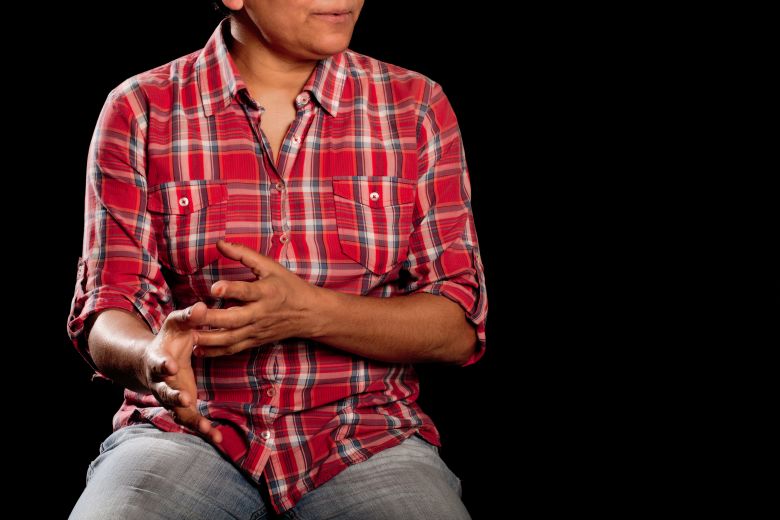They
İpek Duben
Salt Galata
April 28 – June 28, 2015

Photo: Kenan Sunar
They is a multi-screen video installation about how the majority of society in Turkey view those they consider as “others” and how these marginalized others perceive one another. The installation presents 24 people who come from a diversity of ethnic origins, belief systems, and sexual orientations. They appear on different screens and share their personal stories. Kurds, Alevis, Zazas, Rums, Armenians, Jews, Romanis, LGBT individuals, covered Muslim women, as well as women violated by their husbands, recount their experiences both to each other and at the same time to the audience. They discuss their attitudes, prejudices and preconceptions as if at a roundtable where their views come together in unison.
The installation comprises two distinct zones, each containing a group of three projections along with a range of independently placed screens. In each zone, characters appear on screens, having a conversation in the presence of the audience around specific concerns such as racism, discrimination based on religion and beliefs, homophobia, gender inequality and domestic violence. The installation attempts to encourage dialogue between people who never, or rarely, have a chance to speak with each other. On the independent screens, each character recounts an unbroken monologue. A murmur of languages including Kurdish, Ladino, Armenian, Greek and Turkish, resonate in the background.
İpek Duben’s interest in the “outsider,” the “other” or “they” began with her research into the Western gaze and preconceptions regarding the “Turk,” which became the central theme of What is a Turk?, a postcard and video installation from 2003. Duben’s multimedia installations, paintings, artists’ books and videos focus on notions of memory, identity, gender and migration. She recently participated in the exhibition Poetry and exile: contemporary art from the Middle East (British Museum, London, 2014) and the 13th Istanbul Biennial (2013) as well as exhibitions organized at Istanbul Modern (2011 and 2009) and The National Museum of Women in the Arts (Washington D.C., 2010). Duben is also a teacher and writer on modern and contemporary art. Her published books include Seksenlerde Türkiye’de Çağdaş Sanat: Yeni Açılımlar (with Esra Yıldız, 2008); Türk Resmi ve Eleştirisi: 1880-1950 (2007), and Çağdaş Düşünce ve Sanat (with Deniz Şengel, 1993).
Video production and synchronization are realized by Kenan Sunar.
Production assistant: Necmi Gürbüz
The installation comprises two distinct zones, each containing a group of three projections along with a range of independently placed screens. In each zone, characters appear on screens, having a conversation in the presence of the audience around specific concerns such as racism, discrimination based on religion and beliefs, homophobia, gender inequality and domestic violence. The installation attempts to encourage dialogue between people who never, or rarely, have a chance to speak with each other. On the independent screens, each character recounts an unbroken monologue. A murmur of languages including Kurdish, Ladino, Armenian, Greek and Turkish, resonate in the background.
İpek Duben’s interest in the “outsider,” the “other” or “they” began with her research into the Western gaze and preconceptions regarding the “Turk,” which became the central theme of What is a Turk?, a postcard and video installation from 2003. Duben’s multimedia installations, paintings, artists’ books and videos focus on notions of memory, identity, gender and migration. She recently participated in the exhibition Poetry and exile: contemporary art from the Middle East (British Museum, London, 2014) and the 13th Istanbul Biennial (2013) as well as exhibitions organized at Istanbul Modern (2011 and 2009) and The National Museum of Women in the Arts (Washington D.C., 2010). Duben is also a teacher and writer on modern and contemporary art. Her published books include Seksenlerde Türkiye’de Çağdaş Sanat: Yeni Açılımlar (with Esra Yıldız, 2008); Türk Resmi ve Eleştirisi: 1880-1950 (2007), and Çağdaş Düşünce ve Sanat (with Deniz Şengel, 1993).
Video production and synchronization are realized by Kenan Sunar.
Production assistant: Necmi Gürbüz

